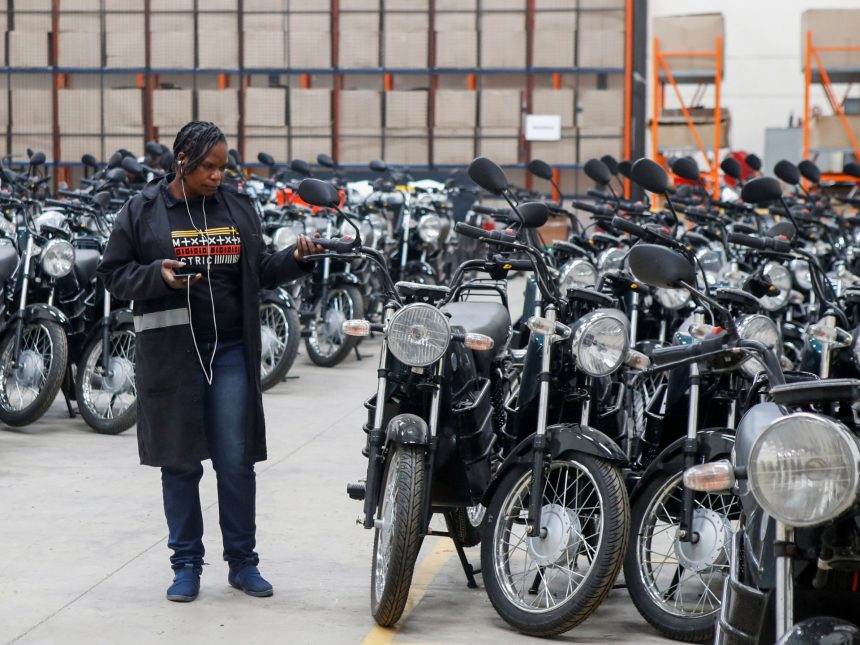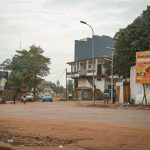[ad_1]
In East Africa, start-up company Ampersand Solar has a plan to transition millions of “boda boda” taxi drivers to cheaper, cleaner electric motorcycles.
In Nigeria, energy company Phoenix Edison is ready to build the country’s first waste-to-energy project, reducing municipal waste and carbon emissions.
In Kenya, fertiliser maker Safi Organics is converting local biomass waste into fertiliser and is aiming to provide farmers with income from carbon credits.
These projects are proven and ready to grow. They will create jobs, reduce emissions and promote sustainable development. But they and many similar business ventures around the developing world are struggling to attract the appropriate finance because capital is expensive and the investments are perceived as risky.
It is a symptom of a wider problem: the global financial system is stacked against project developers in countries on the front lines of climate change. This is paralysing action in communities that are most at risk from the negative impacts of climate change, such as extreme cyclones, droughts, floods and heat.
Unlocking climate finance for mitigation, adaptation and nature regeneration requires a fundamental overhaul and disruption of the global financial system, starting with three crucial steps.
The first step is getting projects off the ground by attracting investments. Compelling business cases exist, but they often fail to meet the narrowly focussed commercial requirements and constraints on private financiers.
Project preparation facilities are still too small, hard to access and largely disconnected from follow-on funding and de-risking mechanisms. In fact, project finance volumes in low- and middle-income countries dropped from $91bn in 2019 to less than $60bn in 2022, according to the World Bank.
That is why we need to build an environment that can turbocharge high-quality projects and facilitate financing. States can lay the foundations by including support for such projects in their climate and development plans. The private sector can also add value by sharing early feedback and expertise with project developers.
We, the UN High-Level Champions, are also taking action. Last year, we held regional finance forums to showcase more than 100 shovel-ready projects in emerging markets and developing countries, including Ampersand, Phoenix Edison and Safi Organic. The aim was to dispel perceptions and demonstrate that there is already a strong pipeline of projects. This year, we are working to match many of the project developers with public and private financiers.
The second step is to extend below-market-rate, or concessional, capital for emerging markets and developing economies. It is more expensive to borrow money for climate action projects in poor countries than in wealthy countries.
We propose that multilateral development banks such as the World Bank and International Monetary Fund (IMF) offer poorer countries a 1 percent interest rate, a 10-year grace period, followed by a 20-year repayment period to finance projects that enhance adaptive capacities and build resilience to climate change. This will allow domestic banks to reduce interest rates for those projects.
Furthermore, governments and philanthropies should create sizable and flexible pools of concessional capital. This would provide easier and more transparent access to capital for the best proposals, based on agreed criteria, and diversify the associated risks.
The third step is to reduce and suspend debt for low- and middle-income countries. The more these countries are battered by the effects of climate change, the more they borrow to try to recover and the more their debt mounts. About 60 percent of low-income countries are in or near debt distress, according to the IMF.
De-risking project finance and extending concessional capital will help to alleviate debt by providing alternative finance options. In addition, loan contracts should include debt-suspension clauses for natural disasters, and lenders should support debt-for-nature or -climate swaps in which recipients invest in nature regeneration and climate action in exchange for repayments.
The global financial system is beginning to understand and respond to its weaknesses, as we saw at last week’s Summit for a New Global Financial Pact held in Paris. The IMF announced it fulfilled a pledge to make $100bn in Special Drawing Rights available to climate-vulnerable countries, which would provide them with much-needed liquidity.
The summit also saw Senegal reach a $2.7bn deal for clean energy investments from developed countries and Zambia lock in $6.3bn debt restructuring.
These are important developments, but there is also much unfinished business that needs to be tackled this year – including at the Africa Climate Summit in September and the UN COP28 conference in November.
Emerging markets and developing countries will require at least $1 trillion per year in external climate finance by 2030 to adapt to climate change and pursue low-carbon development pathways, according to the Finance for Climate Action Report.
Unlocking this finance does not only make sense, but it is also imperative – for business, for climate action, and for sustainable development.
Ampersand expects to distribute more than 700,000 e-motorbikes and reach $1.7bn in revenues per year in 2031, according to its project factsheet. This will save boda boda drivers half their income and reduce carbon emissions and air pollution.
Phoenix Edison expects to hit $41m in revenue within five years, with an investment of $116m, according to its project factsheet.
Safi Organics expects nearly $18m in revenue in 2028, according to its project factsheet. This would increase farmers’ crop yields by 30 percent, income by 50 percent, create up to 20,000 direct jobs and recycle biomass waste.
Investors will flock to support these and many other projects and to scale them up. They just need to see the potential and overcome the risks. The financial community has the means and opportunity to do this, and in so doing, it can become a catalyst for a just and equitable transition.
The views expressed in this article are the authors’ own and do not necessarily reflect Al Jazeera’s editorial stance.
[ad_2]
Source link












